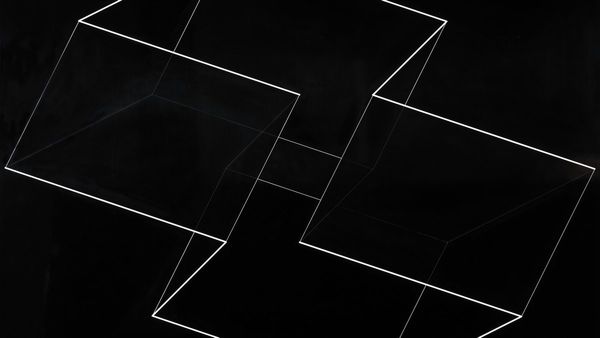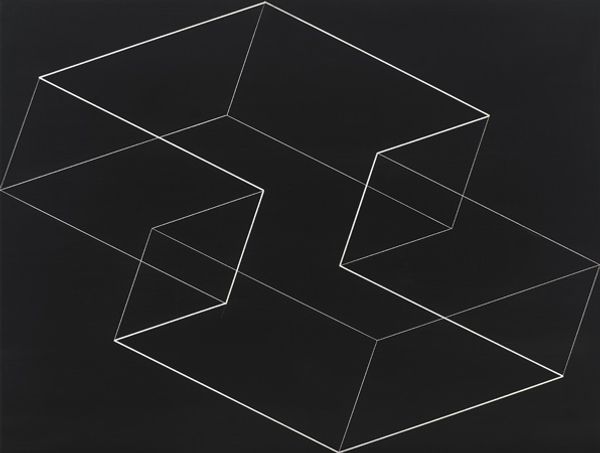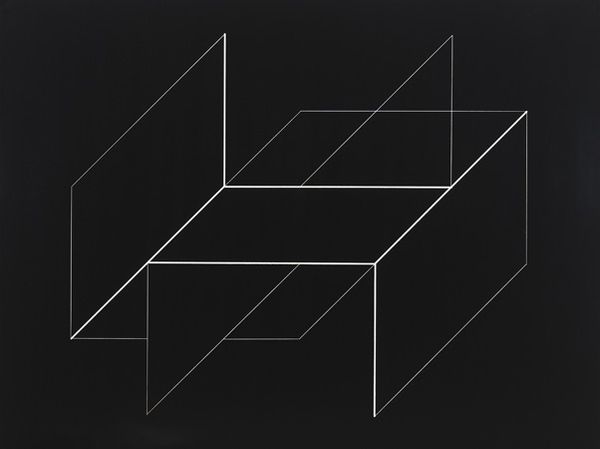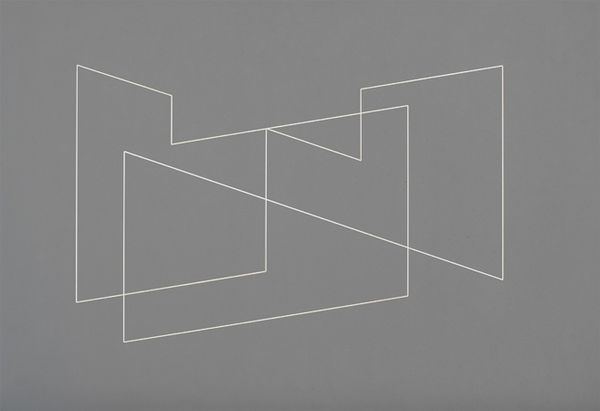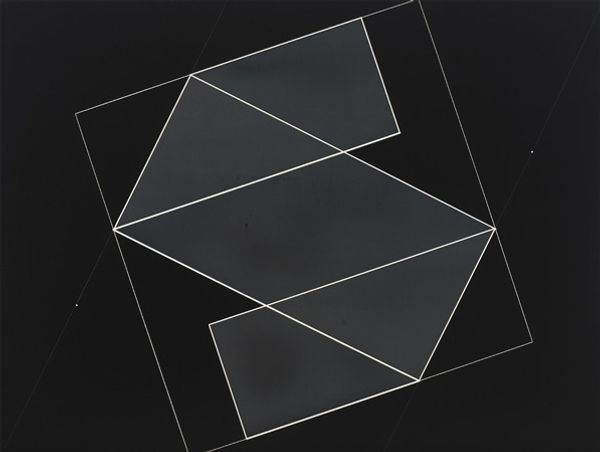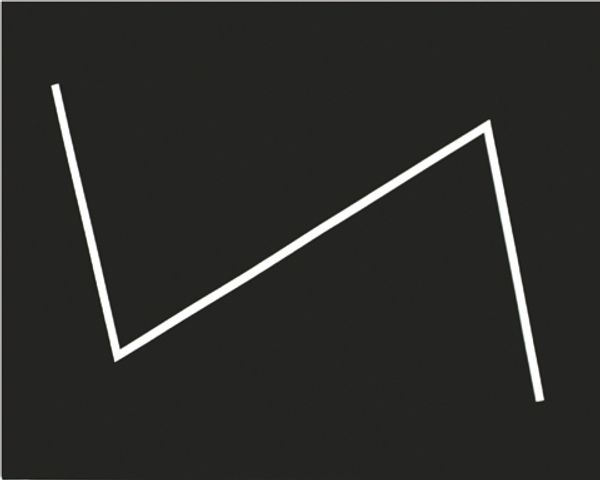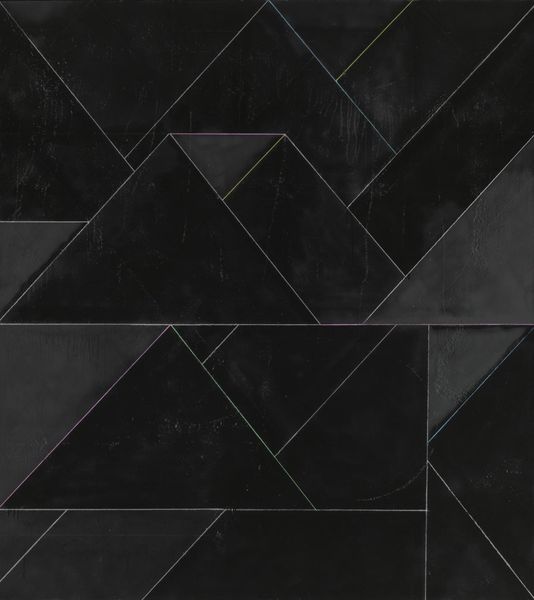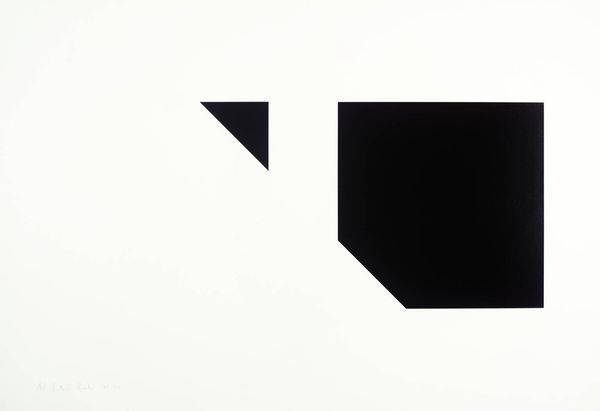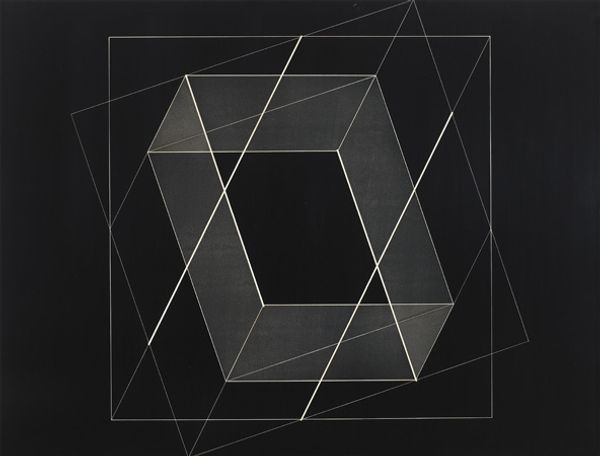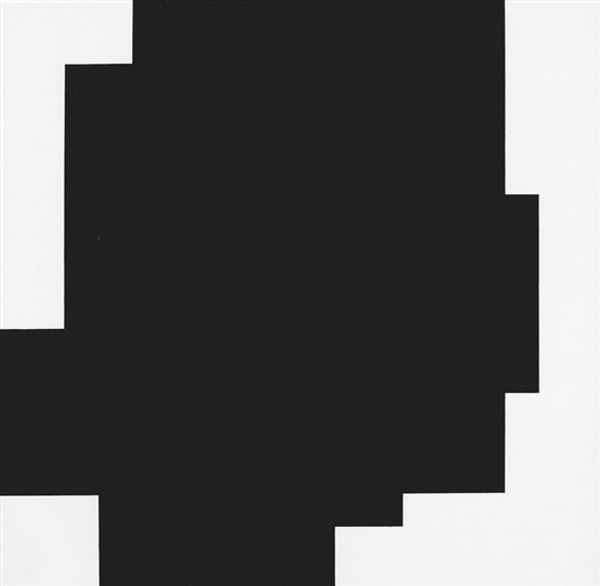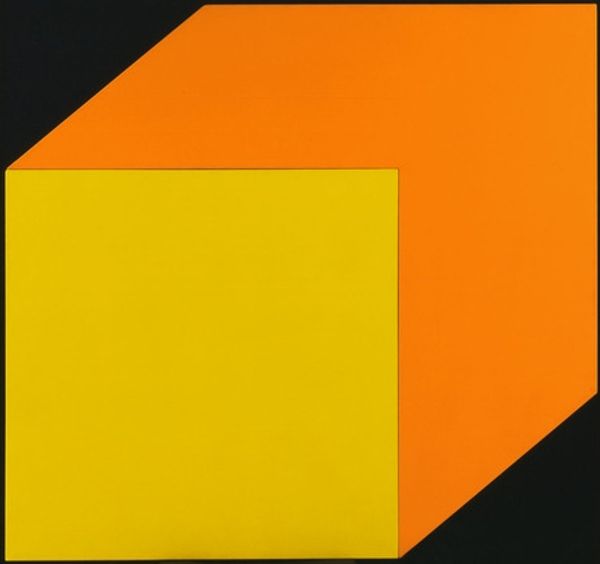
#
op-art
#
colour-field-painting
#
form
#
geometric pattern
#
geometric
#
geometric-abstraction
#
abstraction
#
line
#
geometric form
#
modernism
#
hard-edge-painting
Copyright: Josef Albers,Fair Use
Curator: Stepping up to Josef Albers’ “F.M.E. 5,” crafted in 1962, we encounter a work that typifies hard-edge painting. The piece is an interplay of geometric forms realized in clean, precise lines against a stark field. Editor: It gives the impression of an impossible structure, doesn't it? Something that messes with your depth perception, almost like a glitch in the matrix. It evokes this feeling of instability and unease. Curator: I think that sensation stems from its roots in Op Art—Optical Art—a movement designed specifically to manipulate the viewer's perception. This work exemplifies the artistic pursuit of evoking illusion, a play on perspective and form that toys with our brains. Do you find a symbolism emerging from such severe geometry? Editor: Absolutely. While formally abstract, there's a subliminal reference to architecture and structure, power dynamics inherent in building. Consider who gets to define and design spaces. Geometric forms weren't abstract at all, especially when you consider figures of modern planning. Curator: I agree it would be naive to consider these pure exercises. However, the lack of human form and narrative makes these symbols potentially open, capable of multiple resonances. Editor: And even the simplest lines contain coded references that are often left unexamined, as are their politics. Perhaps by defamiliarizing them, the politics can be highlighted again. After all, Josef Albers came from a Europe in which art, politics, and philosophy, was inextricably entangled. Curator: It seems we agree that Albers provides more than initially meets the eye. This apparently simple geometric study sparks critical inquiries into the social constructs that form the basis of our visual culture. Editor: Precisely. "F.M.E. 5" invites us to question how visual culture normalizes relationships of power. It underscores art's potential as an instrument to ignite thought.
Comments
No comments
Be the first to comment and join the conversation on the ultimate creative platform.
